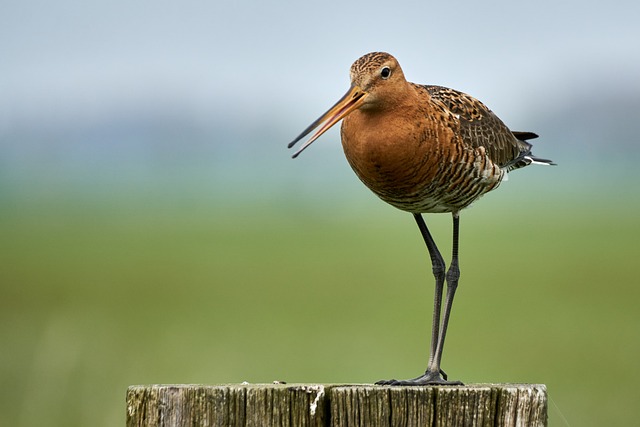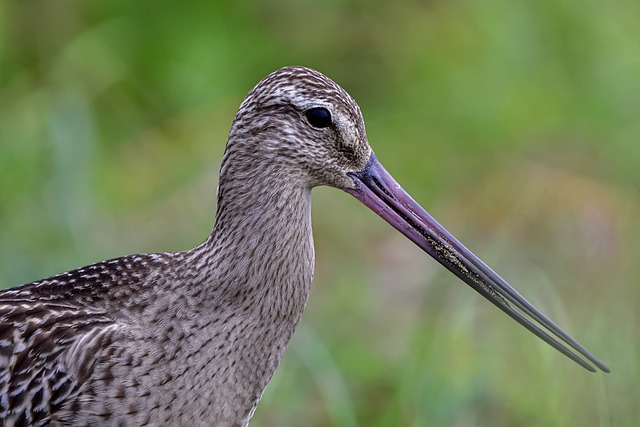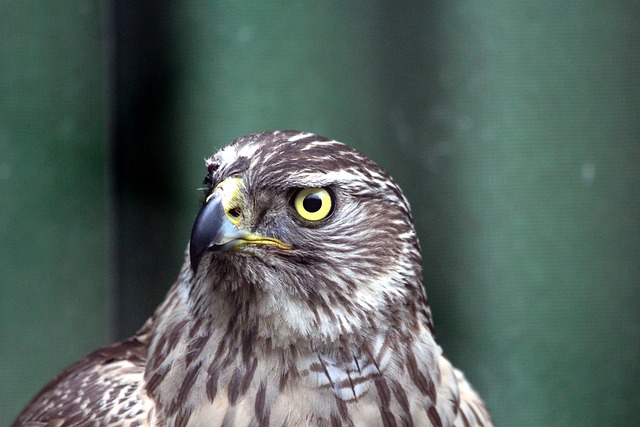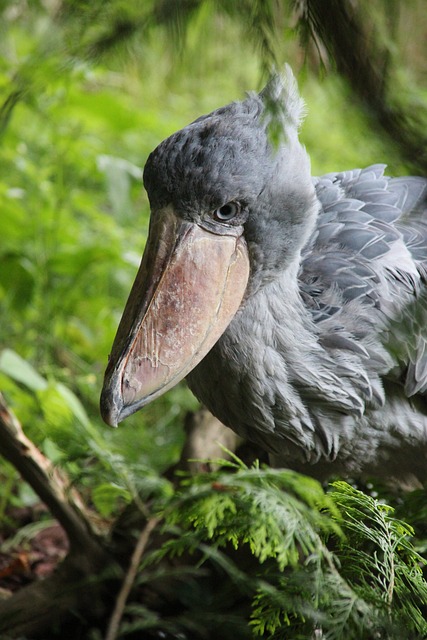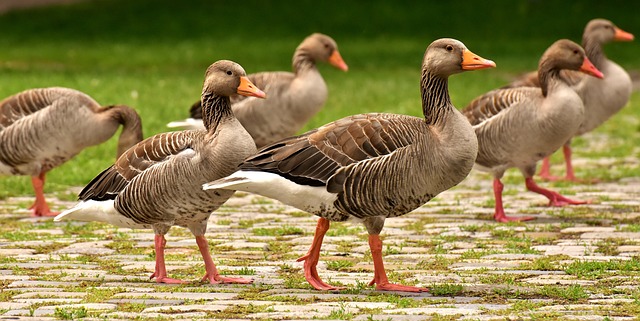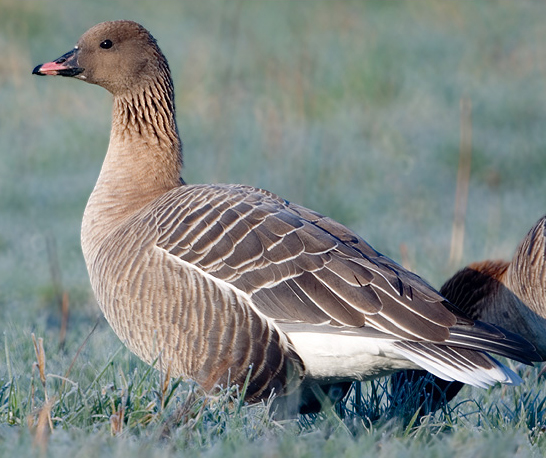Whisked from the pages of fantasy and perched high in the canopies of dense forests, the goshawk remains a figure of wonder and intrigue. It's a bird cloaked in an aura of mystery, as powerful as it is elusive. With its piercing gaze and swift wings, the goshawk is the silent whisper in the woods, the shadow that passes unnoticed until it strikes. This article aims to shed light on the elusive hunter of the forest, unraveling the tapestry of awe that surrounds this magnificent bird of prey. Join us on a journey to uncover the secrets of the goshawk's behavior, its formidable hunting abilities, and the unique characteristics that cement its status in the annals of avian royalty. Through the thicket of legend and foliage alike, let's delve deeper into the life of the goshawk, an enigma painted with feathers and flight.
The Physical Characteristics of the Goshawk
Imagine a creature so adept at hunting that it seems to become one with the forest. The goshawk, a bird cloaked in mystery and armed with a suite of physical adaptations, is the winged embodiment of a silent assassin. When you envision the goshawk, picture a bird with a robust, muscular body that channels the very essence of avian strength.
On average, these birds of prey boast an impressive size, with adults reaching lengths of up to 24 inches. They command the skies with a wingspan that can stretch nearly 4 feet across, allowing them to navigate the dense canopy with agility and precision. But it's not just their size that makes them formidable; it's also their coloring. The goshawk's plumage is a tapestry of slate gray and subtle browns, an ensemble that allows it to blend seamlessly with the treetops and the dappled light of its wooded home.

One cannot discuss the physical prowess of the goshawk without marveling at its distinguishing features. The goshawk's piercing orange or red eyes are windows to a soul as fierce as the talons they command. These razor-sharp daggers at the end of their powerful legs make the goshawk's arsenal complete. With a grip that can exert a crushing pressure, they are the epitome of evolutionary design for catching and immobilizing their unsuspecting prey.
Then there's the goshawk's sharp vision. Known to be one of nature's most exceptional visual hunters, these birds can spot a twitch in the underbrush from 100 feet above. Their binocular vision is an unparalleled tool, affording them the depth perception necessary to execute precise attacks from the sky. It's a biological superpower that lends itself to their repute as masters of the hunt.
- The goshawk's eyes are fortified with a high number of sensory cells, perfect for detecting movement and honing in on targets with lethal accuracy.
- Their powerful talons are not just weapons, but also instruments of precision, allowing them to snatch a scurrying squirrel or a fluttering bird with the finesse of a practiced predator.
- Every aspect of the goshawk's physicality, from its broad, rounded wings to its long tail, is tailored for maneuverability and speed—crucial characteristics for a bird that often hunts in the labyrinth of tree trunks and branches.
The harmony of these attributes—size, color, sharp vision, and powerful talons—converge to create a creature that is the very definition of a formidable predator. The goshawk's hunting abilities are not just a matter of raw power but of a delicate balance between strength and subtlety, an animal fashioned by nature to be an elusive hunter of the forest.
Habitat and Distribution of the Goshawk
Like a phantom draped in feathers, the goshawk, with its enigmatic presence, glides through its chosen domain with a silent authority. These magnificent birds stitch together a tapestry of natural wonder across the globe, seamlessly blending into the leafy abodes of forests and woodland areas. A closer look at the habitat and distribution of the goshawk reveals a creature at once deeply rooted in its environment and yet capricious in its reach.
The goshawk, a creature that prefers the whispered secrets of dense canopies, typically selects temperate and boreal forests as its stage upon which to perform the dance of survival. The trees provide a natural cloak, a perfect camouflage for a hunter of such stealth and poise. This affinity for arboreal realms is not just a matter of aesthetics but a tactical choice, as the forest's labyrinth offers the perfect backdrop for their predatory prowess.
- Northern Hemisphere Dominance: The majority of goshawk populations embroider the landscapes of the Northern Hemisphere. From the evergreen cloaks of North America to the broadleaf havens spread across Europe and Asia, these birds are as international as they are enigmatic.
- Adaptable Abodes: Despite their fondness for forests, goshawks prove remarkably adaptable. Some have been sighted in urban settings, navigating the concrete jungles with the same finesse as their natural woodland habitats. This adaptability hints at a resilience that is both awe-inspiring and necessary in a world where human and avian territories increasingly overlap.
- Rural and Urban Kings: It's not uncommon to find goshawks asserting their dominion in both rural and urban areas. This versatility in habitat choice underscores their ability to conquer diverse territories and conditions.
The goshawk's distribution is a testament to its mastery of the skies and its adaptability on the land. While some regions serve as hotspots for these winged wonders, they are not bound by borders or continents. From the sun-dappled groves of the United States to the shadowed forests of Siberia, goshawks write their own atlas with the beat of their powerful wings. Unseen, they soar above, a testament to nature's enduring enigma.
However, human activities such as deforestation pose a dire threat to the goshawk's sanctuary. Their presence in our myths and backyards alike remind us that these birds are not merely inhabitants of the forest; they are integral threads in the tapestry of our shared natural heritage. As they navigate the delicate balance between the wilds and the touch of human sprawl, goshawks challenge us to consider the legacy we leave in the wake of our environmental decisions.
The goshawk's habitat and distribution paint a portrait of a nomad at home in the world's woodlands, adapting to change with a quiet dignity. Yet, as they skirt the fringes of human awareness, these birds of prey urge us to look closer and consider our impact on the silent hunters overhead. In the realm of environmental conservation, understanding and preserving the havens of the goshawk is not just a matter of scientific curiosity but a profound responsibility.
Behavior and Hunting Techniques of the Goshawk
The goshawk, a veritable phantom of the forest, exemplifies the essence of a solitary hunter. Like a shadow slipping through the trees, the goshawk's behavior is an intricate dance of stealth and skill. Far from the social flutterings of other birds, the goshawk is fiercely territorial, often reigning supreme over a vast wooded domain. This solitary nature is key to its hunting tactics; the goshawk is like a whisper in the woods, seen only by the sharp-eyed and the lucky.
When it comes to hunting, the goshawk is unrivaled in its mastery of the ambush. With a blend of patience and explosiveness, it is the epitome of predatory prowess. The goshawk's strategy can be likened to a well-planned game of hide and seek, where the goshawk is always “it,” and the stakes are life and death. Here's a brief glimpse into the hunting playbook of this feathered tactician:
- Stealth Approach: The goshawk approaches its prey silently, using the dense canopy as cover.
- Sudden Strike: Bursting from its cover with astonishing speed, the goshawk snatches unsuspecting prey in a fraction of a second.
- Powerful Talons: Equipped with razor-sharp talons, the goshawk delivers a deadly grip that few can escape.
What makes the goshawk's hunting technique particularly remarkable is its list of preferred prey. From the tiniest of songbirds to the more substantial squirrels and rabbits, the goshawk’s menu is diverse. It does not shirk from challenging prey, such as other birds of prey or creatures that take a considerable amount of cunning and might to subdue.
The goshawk’s sharp vision is legendary, able to detect the slightest movements of its prey from afar. The mosaic of colors in its plumage allows for a chameleon-like camouflage amongst the leaves. Few can claim to have seen a goshawk on the hunt and not felt a mix of awe and a smidge of envy for such precision and grace.
The goshawk’s hunting repertoire is not just about raw power; it's poetry in motion, a lethal ballet performed in the theater of the forests. It is this combination of stealth, speed, and strength that has solidified the goshawk's reputation as a formidable predator. The goshawk’s technique is not just about survival; it is artistry, it is instinct, it is the wild calling, and it answers with a fierce whisper that sends a shiver down the spines of its prey.
Indeed, the goshawk is a guardian spirit of the forest, a reminder that even in the stillness, there is movement, in the silence, a whisper, and in the apparent calm, a storm waiting to unfurl its wings. The goshawk, with its hunting prowess, enforces the laws of nature, where only the keenest and most resilient thrive.
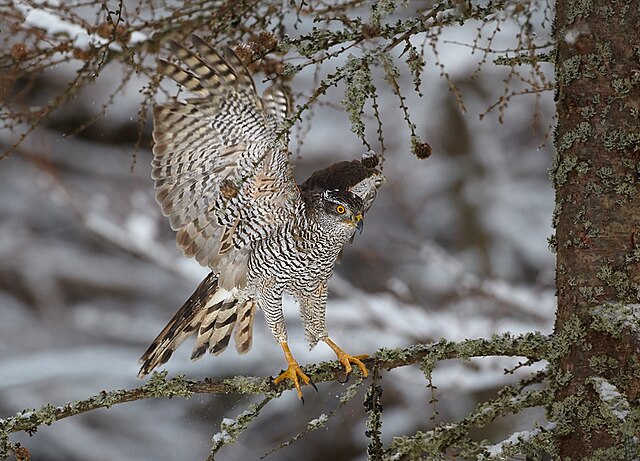
Breeding and Reproduction of Goshawks
The dance of love in the animal kingdom is often as elaborate as it is essential, and for the goshawk, it is a ballet set in the skies. When spring rolls around, painting the forests with a fresh coat of green, goshawks commence a courtship that is as majestic as their piercing gazes. The mating rituals of these birds of prey are a testament to their dedication and finesse. Males showcase their flying prowess through a series of aerial displays, diving and climbing in a spectacle meant to impress potential mates.
This courtship dance serves not just to woo but to establish a strong pair bond, which is vital for the task ahead. Once a pair is formed, they begin the intricate process of nest construction. Both male and female goshawks are architects of the sky, carefully selecting and placing twigs and branches to craft a sturdy nest, often in the fork of a large tree. The choice of location is strategic, high above the ground, to evade terrestrial predators and maintain the element of surprise over their aerial territory.
- Nest Construction: A collaborative effort between mates, resulting in a safe haven for their offspring.
- Pair Bonding: Strengthened by synchronized flying patterns and mutual grooming, fortifying the partnership.
As the breeding season unfolds, the female lays her clutch of eggs, typically ranging from two to four in number. These spherical symbols of the future generation are incubated primarily by the female, while the male takes on the role of provider, hunting and returning with food to sustain his mate.
- Egg Incubation: A period of relentless devotion from the female, who rarely leaves the nest during this phase.
- Hunting and Provision: The male tirelessly patrols the territory, procuring sustenance for his growing family.
When the eggs hatch, the goshawks' nest becomes abuzz with the chirps of their downy offspring, demanding and vulnerable. Both parents share in the feeding and protection of their chicks, teaching them the ways of the forest and the skills they will need to master as the fierce predators they are destined to become. It's during this time that the goshawks encounter the challenges and threats that come with parenthood.
Predation and habitat loss are ever-looming threats, but it is the resilience and ferocity of these avian parents that often prevails. The survival of the young is a testament to the goshawks' unwavering commitment to their progeny and the continuation of their lineage within the dense tapestry of the forest ecosystem.
As summer wanes and the young goshawks fledge, taking tentative leaps and flights from the nest, the cycle of life for these elusive hunters goes on. It is a cycle marked by grace, agility, and an untamed spirit that resonates through the forest canopies they call home. To witness the breeding and reproduction of goshawks is to glimpse into a world where nature's raw beauty plays out in the intimate dance of life's perpetuation. And so, the goshawk's legacy endures, a silent whisper in the woods, a shadow against the sky.
Relationship between Goshawks and Humans
The relationship between goshawks and humans is a tale as old as time, weaving a rich tapestry of cultural significance, admiration, and ecological impact. These elusive hunters of the forest have not only captivated the hearts of bird enthusiasts but have also played a significant role in the ancient art of falconry. Their fierce demeanor and sharp hunting skills made them highly coveted among nobles and kings, who saw the training of a goshawk as a reflection of their own power and status.
The Goshawk in Falconry
Delving into the historical archives, one cannot overlook the goshawk's prominence in falconry, a sport once known as the ‘Sport of Kings'. The goshawk, with its razor-sharp talons and keen eye, became a symbol of precision and prowess, making it a favored bird among falconers. Even today, the goshawk's majestic flight and hunting proficiency continue to mesmerize those who practice this ancient craft.
Environmental Impact on Goshawks
However, the relationship between goshawks and humans isn't solely romanticized in history books. The modern era has unleashed challenges that these birds of prey are forced to navigate. Human activities like deforestation and urban sprawl have encroached upon the goshawk's natural habitat, turning lush forests into a mosaic of fragmented woodlands. The resultant habitat loss and alteration have put a strain on goshawk populations, pushing these secretive creatures to adapt to life on the margins of urbanized areas.
- Loss of large, uninterrupted tracts of forest
- Disturbance from recreational forest activities
- Collisions with man-made structures
Conservation and Protection Efforts
In response to these challenges, conservationists and wildlife enthusiasts are banding together to ensure the goshawk's future. Protection efforts are in full swing, ranging from legal protections and habitat conservation to public education campaigns that aim to enlighten the masses about the need to coexist peacefully with these forest sentinels. Sustainable forestry practices are being promoted to maintain the large, mature trees that goshawks favor for nesting.
Additionally, dedicated monitoring programs help keep tabs on goshawk populations, allowing conservationists to react swiftly to any worrying trends. These efforts are akin to pieces of a jigsaw puzzle, each crucial in painting the full picture of a thriving goshawk population within the tapestry of our shared ecosystem.
Continued Research for Understanding
Yet, even as we strive to protect them, the goshawk retains its cloak of mystery. Ongoing research aims to peel back the layers of this bird's secretive life. Studies on goshawk behavior, migration patterns, and reproductive success offer glimpses into their world, but much remains to be learned. As scientists and bird watchers alike invest time and technology into understanding these magnificent raptors, each discovery adds to our collective knowledge and appreciation, strengthening the bond between goshawks and the humans who admire them from afar.
Like a ghost in the trees, the goshawk glides through our stories and our forests, a reminder of the delicate balance between mankind and the natural world we inhabit. The goshawk's future, entwined with our own, depends on the respect and protection we afford these majestic creatures. The dance between goshawks and humans, rich in history and complexity, continues to evolve, and it is our responsibility to ensure that this partnership endures for generations to come.
The Mysterious Nature of the Goshawk
Like a phantom cloaked in the shadowy tapestry of dense foliage, the goshawk glides silently through the forest. Its elusive nature has sculpted an air of mystery around this magnificent bird of prey, often making it the subject of intrigue and folklore. The goshawk, a master of stealth and secrecy, has a knack for evading the prying eyes of humans, making it a challenging subject for ornithologists and birdwatchers alike. This feathered enigma's secretive behavior is not just a byproduct of its environment but an integral part of its survival toolkit.
The goshawk's adeptness at remaining unseen is not just about its plumage, which blends seamlessly into the verdant habitat it calls home. It's about its silent flight, a skill that is as much about aerodynamics as it is about the hush-hush culture of the forest. The goshawk is the ninja of the bird world; its approach is so quiet that its prey seldom knows what hit it. This silence is courtesy of the unique structure of its wings and feathers, which minimize turbulence and muffle the sound of its movements.
But the mystery of the goshawk isn't solely found in its stealthy hunting practices. This bird carries a treasure trove of myths and legends in its wings. Across different cultures, the goshawk has been revered and sometimes feared. In some traditions, it is a symbol of strength and prowess, a totem for warriors and hunters. In others, it's a guardian spirit, watching over the forest and its denizens. The goshawk's fierce independence and solitary nature have made it a figure of mystique in many a tale and legend.
Despite modern technology and a plethora of study methods, the goshawk retains its secretive reputation. Their nests, often high up in the tallest trees or on cliff faces, stay hidden from all but the most determined observers. The bird's range of vocalizations, from fierce cries during mating season to soft calls while tending to chicks, adds layers to their enigmatic persona.
- Research Challenges: The challenges in studying these creatures ensures that every snippet of knowledge is hard-earned. Goshawks camouflage effortlessly, dodge tracking efforts, and change nesting sites, leaving researchers to piece together the puzzle of their behavior bit by bit.
- Conservation Concerns: The goshawk's mysterious nature also complicates conservation efforts. Without clear data on their numbers and habits, protecting these birds becomes a game of educated guesses and hopeful strategies.
As we continue to peel back the layers of the goshawk's private life, we uncover more questions than answers. It is this unending puzzle that keeps the flame of curiosity alive. The goshawk, with its piercing gaze and majestic flight, remains a symbol of the wild's untamable heart, a reminder that some mysteries are not meant to be fully understood but to be marveled at from afar. In the end, perhaps the true allure of the goshawk lies in its ability to inspire us, to remind us of nature's relentless enigma, and to encourage us to look deeper into the woods, where the unknown still flutters on silent wings.
